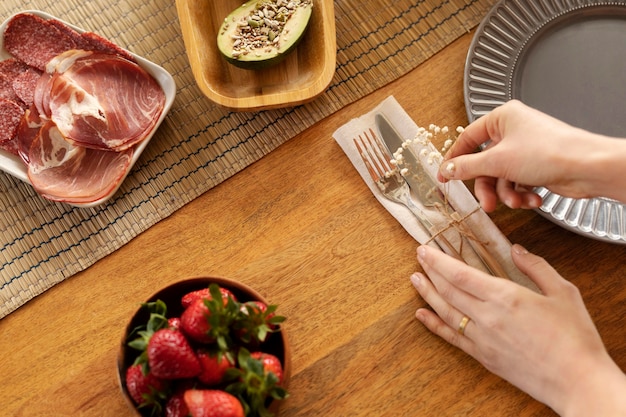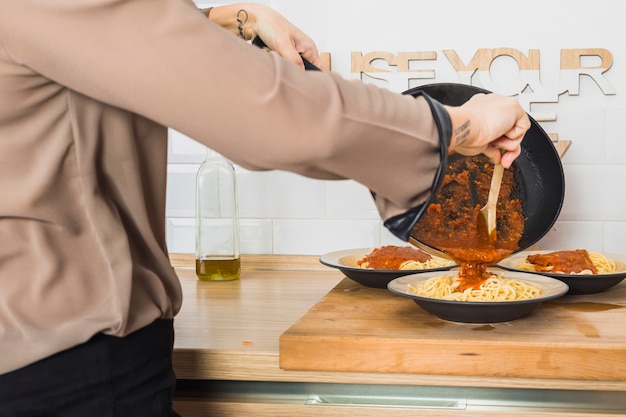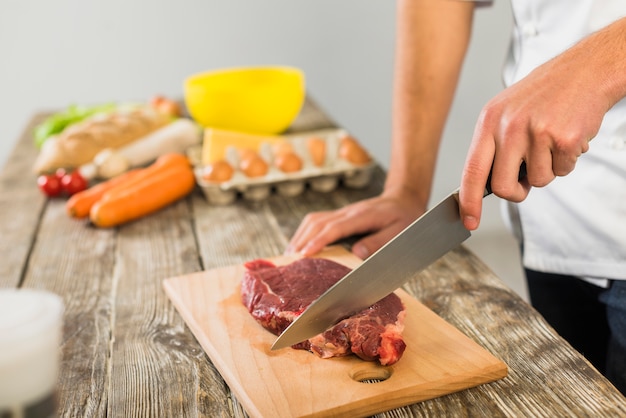I've always loved the rich, savory aroma of corned beef simmering in the pot, but I've also experienced the disappointment of a tough, dry result. Over the years, I've learned a few tricks to ensure my corned beef is always melt-in-your-mouth tender and bursting with flavor. Let's dive into the secrets I've uncovered, starting with the basics.
Part 1: Unveiling the Mystery of Corned Beef

First things first, what exactly is corned beef? It's a cut of beef, usually brisket, that's been cured in a brine of salt, water, and spices. The salt acts as a preservative, while the spices add a distinctive depth of flavor.
Now, let's talk about cooking methods. You can cook corned beef in various ways, but the most common are braising, slow cooking, and pressure cooking. Each method yields a slightly different texture and flavor, so let's explore them in detail.
choosing the right cut: The Key to Tenderness
The key to achieving that perfect melt-in-your-mouth texture lies in selecting the right cut of beef. You'll usually find corned beef sold as brisket. It's a tougher cut, but with its rich flavor, it transforms into an incredibly tender treat when cooked for a long time.
Mastering cooking time: A Guide to Doneness
There's no single answer to the question of how long to cook corned beef. The time will vary depending on the size and thickness of the cut, the cooking method, and your preferred level of tenderness. A good starting point is to cook corned beef for 3-4 hours per pound when braising or slow cooking. For pressure cooking, it takes around 1-2 hours. We'll delve into the specifics for each method later on.
Part 2: Braising: The Classic Approach to Corned Beef

Getting Ready for Braising: Preparation is Key
Braising is a classic technique for cooking corned beef. It involves cooking the beef in a small amount of liquid in a covered pot on the stovetop or in the oven. This slow and gentle cooking method allows the meat to become incredibly tender and absorb the flavors of the liquid.
Before braising, remove the corned beef from its packaging and give it a good rinse under cold water. Pat it dry with paper towels. You can remove the string used to tie the brisket, or leave it on – it will help the brisket maintain its shape.
The Braising Process: Step-by-Step Guide
1. Browning the Beef: In a large dutch oven or pot, heat a tablespoon of oil over medium-high heat. Add the corned beef and brown it on all sides for about 5 minutes. This browning process enhances the flavor of the finished product.
2. Adding the Liquid: Pour in 2-3 cups of beef broth, water, or a combination of both. Add any spices you like – I often add a bay leaf, a few peppercorns, and some garlic cloves. For a more robust flavor, add a cup of chopped onions, carrots, and celery to the braising liquid.
3. Simmering to Perfection: Bring the liquid to a boil, then reduce the heat to low, cover the pot, and simmer for 3-4 hours per pound of corned beef. The meat should be tender and easily pierced with a fork. It should also shred effortlessly.
Tips for Braising: Enhance Your Corned Beef
- Skimming for Flavor: To maximize the flavor of your braising liquid, skim off any excess fat from the surface after the initial boil. This will result in a more flavorful broth for your corned beef.
- Spice It Up: Don't be afraid to experiment with different spices and flavor combinations. You can add a tablespoon of brown sugar to the braising liquid for a slightly sweet taste, or a splash of apple cider for a hint of fruitiness.
- Alternative Liquids: I've found that using beer, apple cider, or even ginger ale in the braising liquid can add a unique twist to the flavor profile.
- pressure cooker Braising: If you're short on time, you can use a pressure cooker to braise your corned beef. Follow the same steps as above, but cook for 1-2 hours depending on the size and thickness of the cut. Always refer to your pressure cooker manual for recommended cooking times.
Part 3: Slow Cooking: A Hands-Off Approach to Tenderness

slow cookers are a true lifesaver for making tender, flavorful corned beef. It's a hassle-free way to cook, perfect for busy weeknights. All you need is a slow cooker and a few basic ingredients.
Setting Up Your Slow Cooker: Easy and Convenient
Rinse and pat dry your corned beef. Place it in your slow cooker. Pour in 2-3 cups of beef broth, water, or a combination. Add spices like peppercorns, garlic cloves, and bay leaves. If you like, add a cup of diced onion, carrots, and celery for an even richer broth.
The Slow Cooker Process: Time for Relaxation
Set your slow cooker to low and cook for 6-8 hours, or on high for 4-6 hours, until the meat is tender. For an overnight cook, set it to low for 8-10 hours. The longer it cooks, the more tender it will become. Remember to check the tenderness with a fork – it should easily pierce the corned beef and shred effortlessly.
Tips for Slow Cooking: Taking It to the Next Level
- Size Matters: Ensure your slow cooker is large enough for the corned beef to fit comfortably. If it's too big, you can cut it in half, just make sure the pieces are evenly sized.
- Flavor Enhancement: For a richer flavor, add a cup of Guinness or another stout beer to the slow cooker.
- Experiment with Liquids: Like braising, you can experiment with different liquids in the slow cooker. I've found that using apple cider vinegar adds a unique tang to the corned beef.
Part 4: Pressure Cooking: Fast and Efficient Tenderness
Pressure cooking is a fantastic option for a quick and efficient way to cook corned beef, especially if you're short on time. However, it's crucial to ensure your pressure cooker is clean and in good working order before you begin.
Setting Up Your Pressure Cooker: Safety First
Rinse and pat dry your corned beef. Place it in the pressure cooker. Add a cup of beef broth, water, or a combination. Add spices like peppercorns, garlic cloves, and bay leaves.
The Pressure Cooking Process: A Quick and Easy Method
Secure the lid of the pressure cooker, making sure it's properly sealed. Turn the heat to high and bring the pressure cooker to high pressure. Once it reaches high pressure, reduce the heat to low and cook for 1-2 hours, depending on the size and thickness of the cut. Always refer to your pressure cooker manual for recommended cooking times.
When the cooking time is up, allow the pressure cooker to release the pressure naturally for about 15 minutes. Then, release the remaining pressure manually by opening the valve. Carefully remove the corned beef from the pressure cooker and set it aside. You can shred it or slice it for serving.
Tips for Pressure Cooking: Safety and Flavor
- Keep Warm Function: If your pressure cooker has a “Keep Warm” function, set it to this function after cooking. This will help keep the corned beef warm until you’re ready to serve it.
- Flavor Boost: Add a cup of diced onion, carrots, and celery to the pressure cooker for an even more flavorful broth.
- Safety First: Be extremely careful when opening the pressure cooker, as the steam can be very hot. Always release the pressure slowly and carefully.
Part 5: Determining Doneness: Knowing When It's Ready
It's essential to ensure your corned beef is cooked through. Undercooked corned beef can be dangerous to eat, while overcooked corned beef will be dry and tough.
Using a meat thermometer: The Reliable Method
The best way to determine if your corned beef is cooked through is to use a meat thermometer. Insert it into the thickest part of the corned beef. It should reach an internal temperature of 145°F (63°C). Always ensure your thermometer is calibrated to ensure accurate readings.
Checking for Tenderness: A Hands-On Test
Another way to check for doneness is to test the tenderness. If you can easily pierce it with a fork and it pulls apart effortlessly, it's cooked through.
Part 6: Resting the Corned Beef: Allowing the Flavors to Blend
After cooking, let the corned beef rest for 15-20 minutes before slicing or shredding. This allows the juices to redistribute throughout the meat, resulting in a more tender and flavorful final product.
While the corned beef is resting, you can use the leftover braising liquid to make a delicious gravy. Skim off any excess fat from the surface, then whisk in a tablespoon of cornstarch or flour. Bring the liquid to a simmer and cook for a few minutes, or until the gravy has thickened. Serve the gravy over the corned beef.
Part 7: Serving Your Corned Beef: A Feast for the Senses
Corned beef is a versatile dish that can be served in various ways. Here are some classic and creative options for you to try.
Classic Corned Beef Dishes: Time-Tested Delights
- Corned Beef and Cabbage: This classic Irish dish is made with corned beef, cabbage, carrots, and potatoes. Serve it with a dollop of mustard or horseradish for a tangy kick.
- reuben sandwich: This delicious sandwich features corned beef, sauerkraut, Swiss cheese, and Russian dressing, all piled high on rye bread. It's a satisfying and flavorful meal.
- Corned Beef Hash: This hearty dish is made with corned beef, potatoes, and onions. It's a perfect choice for breakfast or brunch, especially if you're using leftover braised corned beef. Fry it up with potatoes and onions for a satisfying meal.
Creative Corned Beef Dishes: Explore New Horizons
- corned beef tacos: Shred the corned beef and add it to tortillas with your favorite taco toppings. The saltiness of the corned beef complements the typical taco flavors wonderfully.
- Corned Beef Pizza: This unexpected yet delicious pizza features corned beef, sauerkraut, and Swiss cheese. The savory flavors blend perfectly with a cheesy pizza crust. You can use a store-bought crust or make your own.
- Corned Beef and potato soup: This creamy and comforting soup is made with corned beef, potatoes, and carrots. It's the perfect warm meal on a cold day.
Part 8: Storing Leftovers: Keeping the Flavor Fresh
Corned beef can be stored in the refrigerator for 3-4 days. To store it properly, wrap it tightly in plastic wrap or aluminum foil, or place it in an airtight container. If you want to freeze it, you can do so for up to 3 months. Wrap it tightly in plastic wrap or aluminum foil and then place it in a freezer bag.
Part 9: FAQs: Answering Your Corned Beef Questions
1. Can I Cook Corned Beef From Frozen?
It's generally not recommended to cook corned beef from frozen. However, if you must, defrost it thoroughly in the refrigerator before cooking. Defrosting safely takes 1-2 days, depending on the size and thickness of the cut.
2. What If My Corned Beef Is Too Salty?
If your corned beef is too salty, rinse it under cold water for several minutes to remove excess salt. If that doesn't work, add a little sugar to the braising liquid or slow cooker. The sugar will balance out the saltiness of the meat.
3. What Can I Do With the Leftover Braising Liquid?
The leftover braising liquid, also known as "potlikker," is a delicious and flavorful broth with endless possibilities. Use it as a base for soup, stew, or gravy. You can also add it to your next batch of corned beef for extra flavor.
4. Can I Use a Different Cut of Beef for Corned Beef?
While brisket is the traditional cut for corned beef, you can use other cuts of beef, such as chuck roast or shoulder. Just be sure to cook them for a longer period to ensure tenderness.
5. What Are Some Good side dishes for Corned Beef?
Corned beef pairs well with a variety of side dishes, including mashed potatoes, steamed vegetables, and coleslaw. You can also serve it with a side of rye bread or crackers.
Now you're equipped with the knowledge and confidence to cook corned beef to perfection. Remember, cooking is all about experimentation and finding what works best for you. Don't be afraid to try new things and enjoy the process!
Everyone is watching

Perfect Rice Every Time: The Ultimate Guide to Cooking Rice
Cooking TipsAs a self-proclaimed foodie, I've always been a bit obsessed with rice. It's the foundation of countless cuisi...

The Ultimate Guide to Cooking Asparagus: Tips, Techniques, and Recipes
Cooking TipsAsparagus. The mere mention of this spring delicacy conjures up images of vibrant green spears, crisp and burs...

Ultimate Guide to Cooking the Perfect Thanksgiving Turkey
Cooking TipsThanksgiving. Just the word conjures up images of overflowing tables laden with delicious food, the scent of r...

Prime Rib Roast Cooking Time Chart: Per Pound Guide
Cooking TipsPrime rib roast. Just the name conjures images of lavish dinners, crackling fires, and hearty laughter. It’s ...

Can You Cook Spaghetti with Gasoline? (The Shocking Truth)
Cooking TipsWe've all seen those crazy internet trends. You know, the ones that make you wonder, "Did someone actually try...
